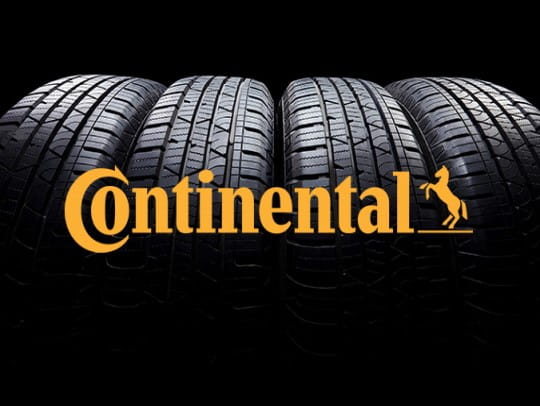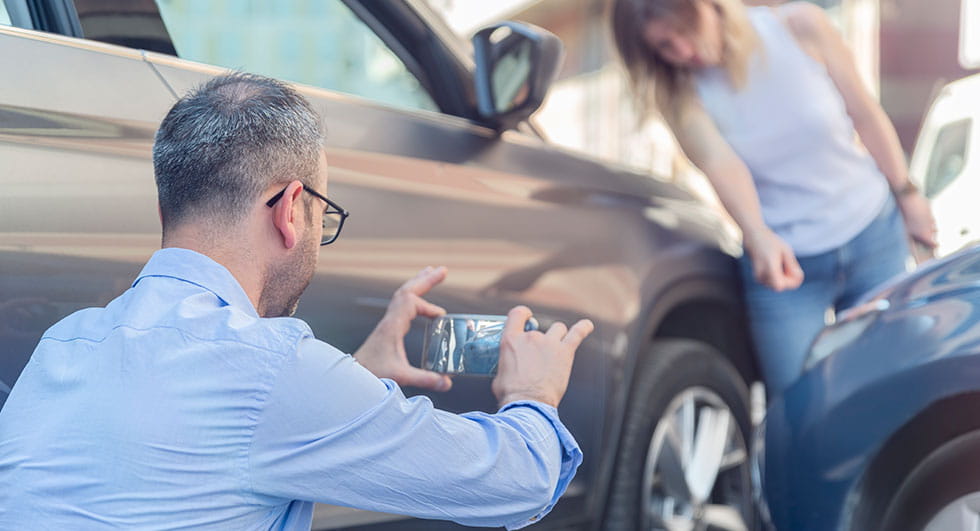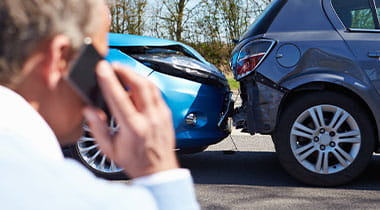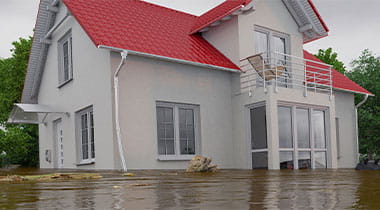While everyone needs and most people have car insurance, it’s not uncommon to be confused about the different types of car insurance, how much coverage you need and how much it will cost you. So, let’s start with some car insurance basics.
Car insurance is a type of insurance policy that provides financial protection against loss or damages related to vehicles, whether caused by an accident, weather, theft, vandalism, or other situations. It’s required by almost every state (except New Hampshire) as well as auto-financing lenders. Still, you need to make some decisions about the car insurance that’s best for you based on whether you own your vehicle, where you live, your coverage preferences, and your budget.
And, there are quite a few options regarding insurance companies, coverages, rates, and other details. Navigating all of this can be overwhelming, which is why we put together a beginner’s guide to help you get started. Read on to learn more.
What are limits, premiums and deductibles?
Your car insurance policy will consist of multiple types of coverage that provide protection in different situations involving your vehicle. Some coverages may be required by a lienholder or lender for financed vehicles, while others are optional. They may also have different limits and deductibles. Understanding these key terms can be helpful.
- Limits: The maximum amount of protection for a specific coverage
- Premium: How much you pay for your insurance policy. This could be paid monthly, biannually, or annually.
- Deductible: The portion you pay out of pocket if you file a claim. Different types of coverage have different deductibles.
What are the types of car insurance coverage?
There are several different components of car insurance that make up a car insurance policy, including the following factors.
- Liability coverage: Covers the costs associated with injuries to others and damage to their property if you’re at fault in an accident. It typically includes bodily injury liability, which covers medical expenses, lost wages, and legal fees if you’re responsible for injuring someone in an accident, and property damage liability, which covers the cost of repairing or replacing vehicle or property damage.
The amount of liability insurance in a policy is typically written as three numbers that represent coverage for bodily injury per person and per accident and property damage per accident. For example, you may see 100/300/100, which would mean $100,000 per injured person, $300,000 per accident, and $100,000 for damaged property.
- Collision coverage: Covers the cost of repairing or replacing your own vehicle if it’s damaged in a collision, regardless of who is at fault. This type of coverage will have a deductible you must pay before the insurance plan coverage kicks in.
- Comprehensive coverage: Provides protection against non-collision-related damages to your car, including theft, vandalism, fire, natural disasters, and falling objects. This coverage also has a deductible.
- Uninsured/underinsured motorist coverage: Protects you if you’re involved in an accident with a driver who has no insurance or who doesn’t have enough coverage to pay for your damages/injuries.
- Personal injury protection (PIP) / Medical payments coverage: Covers medical expenses for you and your passengers after an accident, regardless of who is at fault. PIP can also cover lost wages and other related costs.
Depending on the policy and insurer, you can add other types of coverage such as roadside assistance, rental car reimbursement, and gap insurance, which covers the difference between what you owe on your vehicle and what your vehicle is currently worth in the event it is severely damaged or totaled in an accident.
What kinds of insurance and how much car insurance do you need?
There are a few major factors in determining the kind and amount of insurance you need.
Whether your vehicle is financed: Your lender will typically require you to have liability coverage, comprehensive and collision coverage, and potentially uninsured/underinsured motorist coverage. They may also require you have a certain coverage limit. Having these coverages helps protect the lender’s investment since you don’t outright own the vehicle.
If you do own your vehicle, you may not be required to carry these coverages.
- Where you live: Certain states also have requirements of what types and levels of coverages you must carry vs. what is optional. For example, most states require liability coverage. Check with your state to learn more.
- How much your vehicle is worth: If your vehicle is older, having high deductibles or limits may not make sense because you may be paying more for coverage than the vehicle is worth. If you own your vehicle, consider the costs of repair and replacement when thinking about how much coverage you need.
Talking to an insurance agent can help you determine what kind of coverage and how much coverage you need.
Be sure to review your policy after major life events or changes. That includes not only if you sell your vehicle or buy a new one but also if you get married, buy a house or move, have a teenager who just got their driver’s license, or change jobs. You may need to update your coverages or limits. You may also qualify for additional discounts.
How much does car insurance cost?
The cost for your car insurance premiums depends on a number of personal factors, including the following:
- Age
- Gender
- Vehicle make, model, and age
- Driving record
- Insurance and claims history
- Credit score and history
- Deductibles (Higher deductibles mean you’ll have a lower premium but pay more out of pocket should you get in an accident.)
- Desired coverages and limits
You may also qualify for discounts, such as a safe driver discount, good student discount, or discount for bundling multiple vehicles or your home and vehicle coverage.
How can an insurance agent help you shop for car insurance?
One of the easiest ways to compare car insurance plans is by working with an insurance agent. They can help you understand what coverage you may need and compare policies that fit your budget.
Whether you choose to work with an insurance agent or not, be sure to take these steps for comparing car insurance companies:
- Determine your coverage needs based on your auto lender and/or state requirements, your policy preferences and your budget.
- Gather information such as your driver’s license, vehicle identification number (VIN), existing policy information, and more as your insurance agent will ask you to provide that information to get an insurance quote.
- Get quotes online or with your agent to compare coverage and rates from multiple insurers. Be sure to ask for and evaluate any discounts you may be eligible for as well.
- Read customer reviews, and evaluate the insurer’s customer service, including when customer service reps are available and how you can contact them (such as via phone, email, and/or online). Also, consider the company’s reputation and resources.
- Carefully read and review policy terms, including coverage limits, exclusions, deductibles, and other details.
Once you find a company and policy you’re happy with, you can make an informed decision and purchase a policy.
If you’re working with an insurance agent, they can help you buy the right coverage for a price that fits your budget. You’ll work with your agent to provide all of the applicable information, and they will coordinate finalizing the plan for you.
If you’re not working with an agent, once you choose the right company and coverage for you, you can typically buy your policy through that insurer’s website. In some cases, you may need to call to connect with one of the company’s agents or customer service representatives, who can help you over the phone.
How do car insurance claims work?
If you’re in an accident or your vehicle is otherwise damaged, first check to ensure everyone is safe and call for medical assistance if necessary. In most cases, it’s a good idea to also call the police and file a police report, which can help support your car insurance claim. Also be sure to:
- take photos and videos of the scene and damage to your vehicle and other vehicles;
- get the names, contact details, and insurance information from any other drivers and any witnesses; and
- notify your insurance company as soon as possible.
You’ll then get assigned a claims adjuster to assess the damage and determine how much the insurer will pay to have it repaired. In some cases, they may recommend a repair shop, or you may get to choose your own. The amount the company will pay to cover your losses depends on the coverage you have and your deductible.
For example, if you have a $1,000 deductible and the total cost of repairs is $2,000, you’ll pay the $1,000 out of pocket and the insurance company will cover the remaining $1,000. Your insurance company may pay the repair shop directly, or they may reimburse you by check or direct deposit after you pay the repair shop.
What happens if you don’t have car insurance?
If you’re named on a spouse or family member’s policy, or if you occasionally borrow someone’s vehicle, their insurance covers you while you’re driving.
Otherwise, if you drive your own car without insurance:
- you may face legal penalties, including fines and even jail time, and
- you would be responsible for 100% of costs for injuries and repairs should you be in an accident.
This could cost hundreds or thousands of dollars out of your own pocket, which can be a huge financial hit if you’re not prepared. Having the right coverage can help protect your wallet and help you comply with state and/or auto lender insurance requirements as well as provide peace of mind when you’re out on the roads.



















